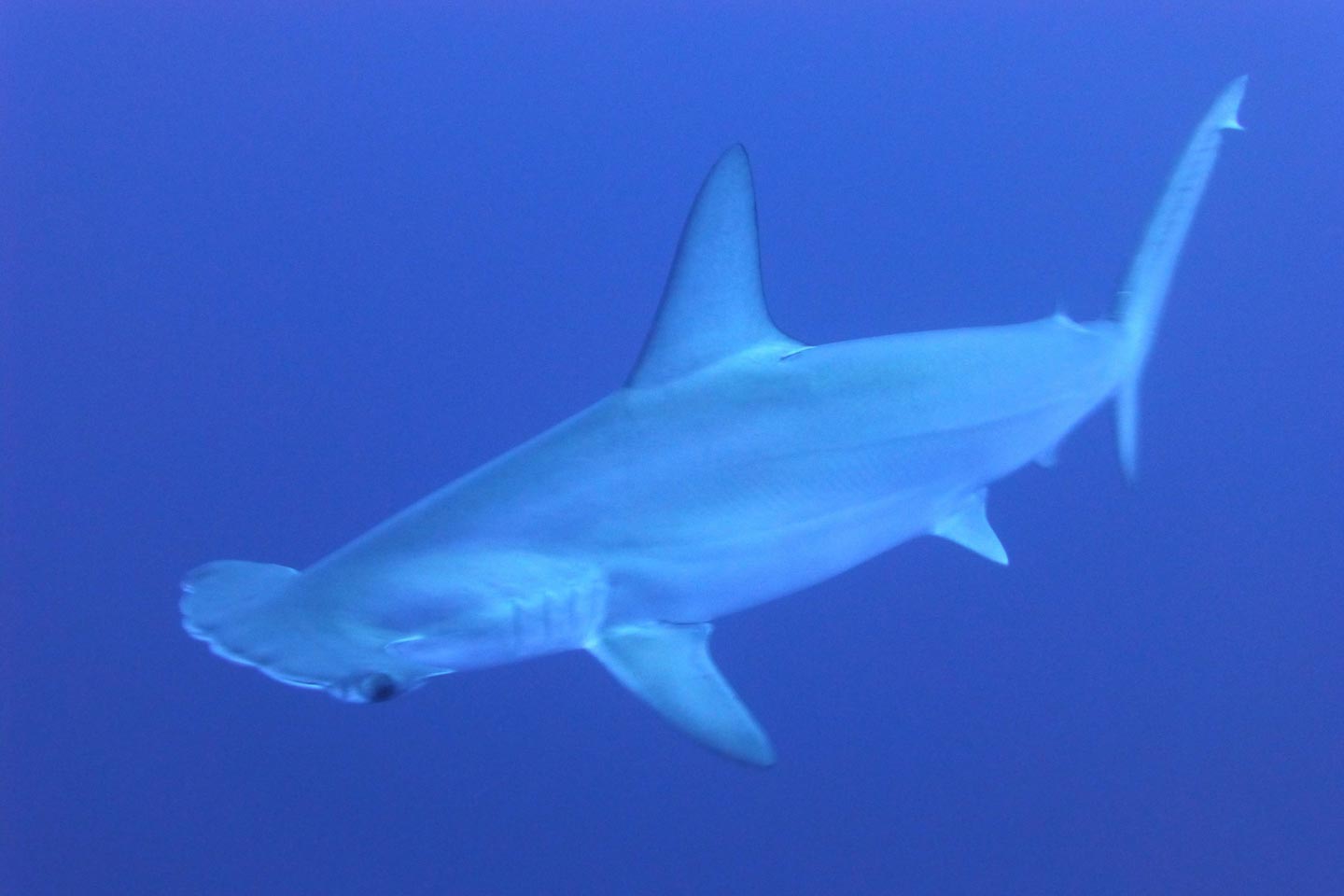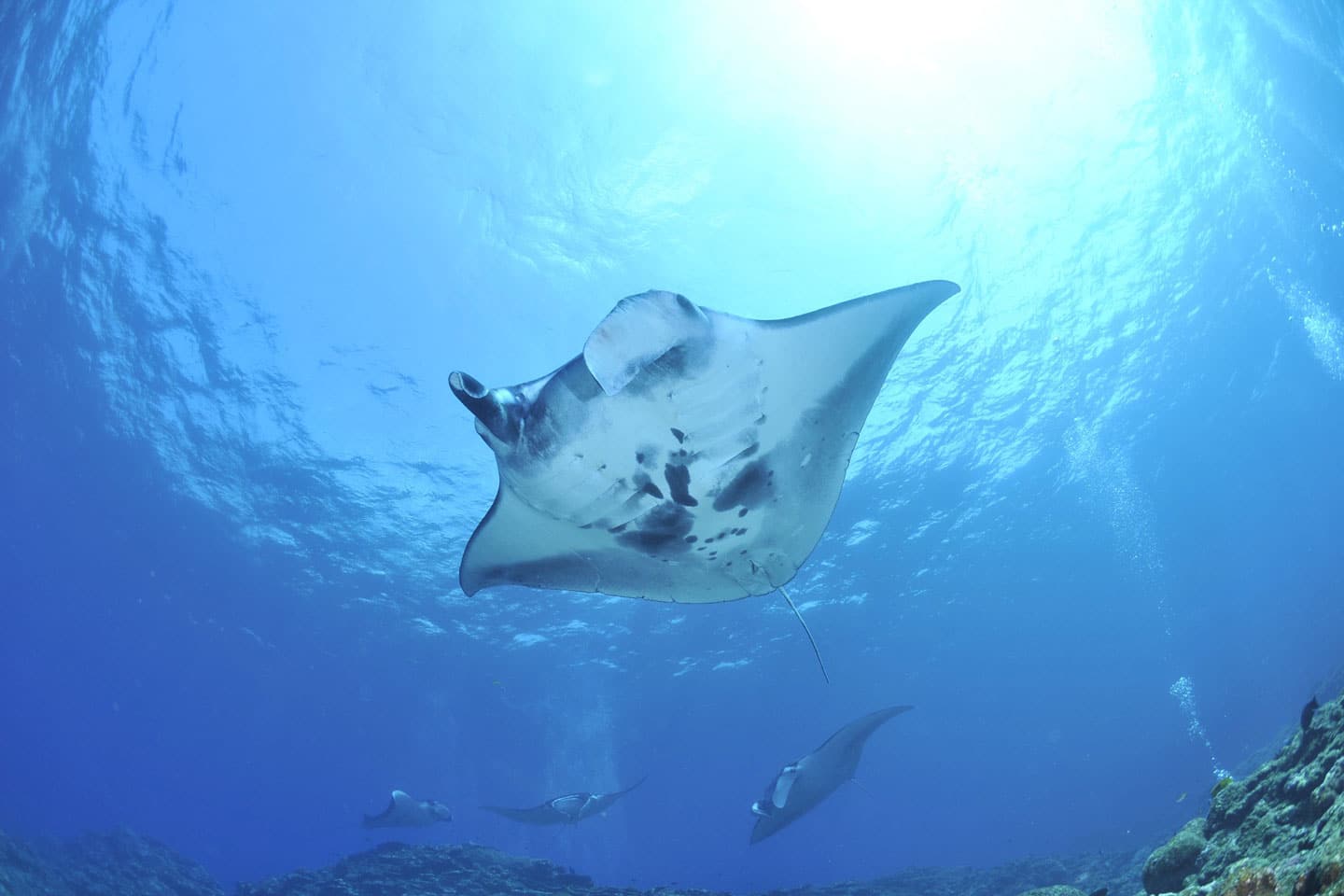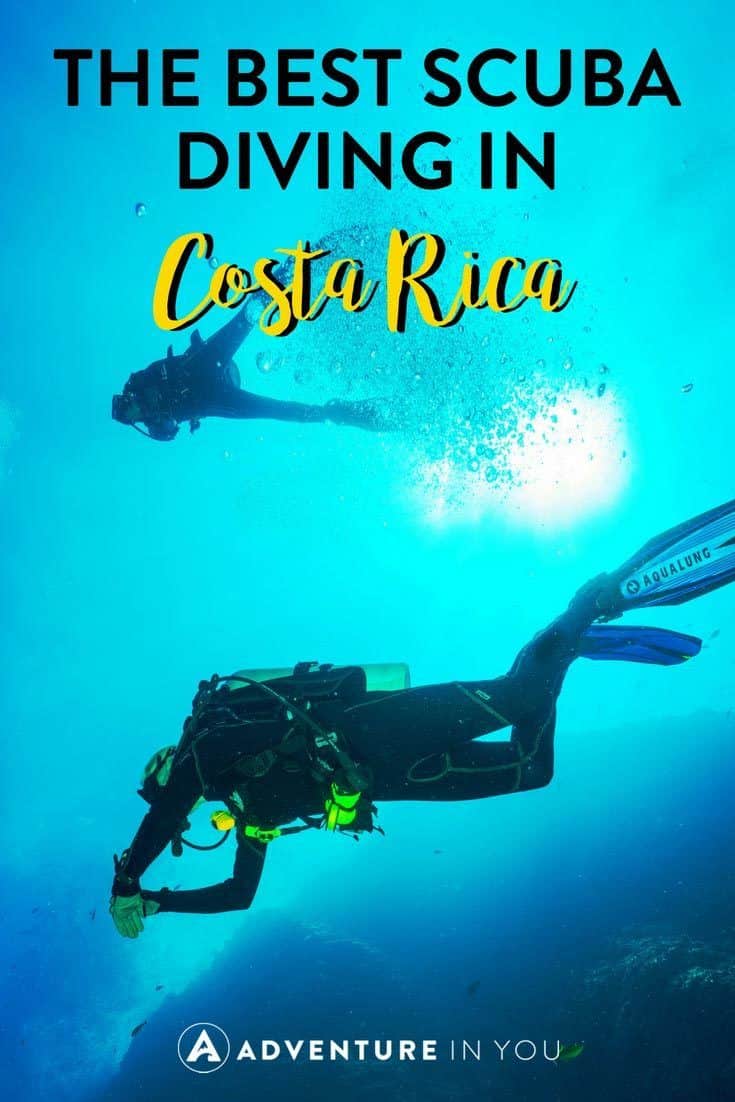Interested in diving in Costa Rica? In this article, I will walk you through all the various diving options in the country.
Costa Rica is well known as the home to many different species of animal and plants, and this is also true for the coastlines. The waters around Costa Rica are teeming with life, from tiny colorful nudibranch to huge migrating humpbacks, it is easy to see why many divers flock to this country every year.
Note: Want to see how Mexico vs Costa Rica compares when it comes to wildlife?
Diving is popular year-round, with the rainy season of May to November bringing warmer ocean temperatures and generally lower accommodation prices.
December to April is dry season, where water temperatures can plummet to as low as 19C/68F on the Pacific side, but seas are generally calmer.
View Contents
Diving in Cocos Island
Often cited as one of the best dive spots in the world, Cocos Island is some 550km off the shore of mainland Costa Rica. Due to its location, it is only accessible by liveaboard diving.
The journey there by boat takes around 36 hours, so it is certainly a remote destination! The island was once declared “the most beautiful island in the world” by Jacques Cousteau, and is a protected marine park inhabited by only Costa Rican Park Rangers.
Deep ocean currents bring up nutrients, attracting all kinds of life. The Island is famous for huge schools of hammerhead sharks, which use the waters around the Island as a cleaning station. Frequently spotted are schools of yellowfin tuna, giant mantas and whale sharks.
There have also been occasional sightings of Tiger Sharks and Orcas. Diving here can be challenging, with unpredictable currents, deep sites and no easy access to healthcare or hyperbaric chambers. You must be an Advanced Diver with experience.
✨The 1 Thing We Never Leave Home Without…✨

Coming from someone who has been traveling the world for the last 8 years AND has been in the hospital 2x, travel insurance is something everyone NEEDS to get. Get a quote below!
Diving in Bat Islands
Isla Murcielago, or “Bat Islands” are situated in Northwest Costa Rica, off the coast of Santa Rosa National Park. The number one attraction here are the Bull Sharks which cruise the shallow waters of dive site “The Big Scare”. Read about my experience diving with Bull Sharks here.
The season runs from May to November, and as these sharks are not fed or enticed in any way, every dive day is different, and no one can guarantee the presence of these magnificent animals. Boat trips leave from the dive centres in Playa Del Coco, and take around 1.5 hours. Keep your eyes peeled on the way for Humpbacks and dolphins.
The Big Scare is best enjoyed by advanced divers, as it requires a fairly speedy free descent to 30 metres, and there can be strong currents. Nearby site “Bajo Negro” is also a beautiful dive, where schools of fish circle this huge underwater pinnacle. You are likely to see Eagle rays, Eels and White tip reef sharks too.
Wondering how to get around from one place to the next? Check out these Costa Rica Transportation Options
Diving in the Catalina Islands
“Cats”, as the islands are affectionately known, lie off the coast of Guanacaste in Costa Rica’s northern pacific coast. This location means the islands are easily accessible from popular resorts such as Flamingo and Tamarindo. The Islands are most famous for the Giant Pacific Mantas which are commonly spotted here.
The prime season to spot these majestic animals is November to April when waters are cooler. Mantas can have a wing span of 7 metres and are loved by divers for their playful nature and graceful movements. Even out of Manta season, “Cats” usually boasts great visibility and lots of life.
Expect to see huge schools of fish, reef sharks and possibly Whale Sharks if you are in the right place at the right time!
Psst...Want in on a Secret? 🤫

We've scoured the internet for the best ALL-AROUND travel shoe and Tropicfeel wins by far. We've taken ours through rivers, jungles, and cities and they're still alive and kickin'. Check them out below.
Diving in Caño Island
This marine biological reserve off the coast of the Osa Peninsula should be on any diver’s itinerary for Costa Rica. The Island can be reached from Drake’s bay or Manuel Antonio, and there are also Liveaboard trips to the area. The number of visitors allowed here is capped, therefore it remains relatively unspoilt. The area is also known for its great visibility, and snorkelling can also be enjoyed here.
The island has several different sites which range in depth, so there is something for all levels of divers. Perhaps the most popular site is Devil’s Pinnacle, where schools of barracuda can be spotted, and even Bull Sharks if you are really lucky.
Around Caño Island expect to see lots of reef sharks, jacks, moray eels and various types of rays. Isla Uvita Most of Costa Rica’s prime dive destinations are on the more well-trodden pacific coast, but the Caribbean side is slowly developing. The waters on this side are much calmer and clearer, offering a great environment for inexperienced divers.
Water temperature on the Caribbean coast doesn’t fluctuate much and is usually between 25 – 28 degrees. Isla Uvita is accessible by boat from Limon, on the mainland. It is not really possible to overnight on the island, as there are no facilities. The ride over takes only 20 minutes, so it is perfect for a dive or day trip.
The main diving attraction here is the wreck of the “Phoenix”. This sunken cargo ship has become a haven for marine life, with colourful coral and schools of fish.
Diving is still a growing industry on this side of Costa Rica, so expect more and more dive centres to open in the future, with sites becoming more accessible. For avid divers, liveaboard diving in Costa Rica is worth checking out as it allows you to go to some pretty epic dive sites.
Looking for more articles on Costa Rica? Take a look at a few of our top ones
- Why You Should Go to Costa Rica
- Surf camps in Costa Rica
- Surfing in Costa Rica
- Which Costa Rican Coast is Right for You?
Inspired? Pin it!
